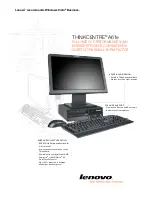
CHAPTER 5
69
Centrally Managed Administration
Network Configuration
The mail direction is based on the
Internal Domains
and
Internal SMTP
hosts
settings. For more information, see “
Internal Domains
Specify internal domains. Messages coming to
internal domains are considered to be inbound
mail unless they come from internal SMTP
sender hosts.
Separate each domain name with a space. You
can use an asterisk (*) as a wildcard. For
example,
*example.com internal.example.net
Internal SMTP
Senders
Specify the IP addresses of hosts that belong to
your organization. Specify all hosts within the
organization that send messages to Exchange
Edge or Hub servers via SMTP as Internal
SMTP Senders.
Separate each IP address with a space. An IP
address range can be defined as:
a network/netmask pair (for example,
10.1.0.0/255.255.0.0), or
a network/nnn CIDR specification (for
example, 10.1.0.0/16).
You can use an asterisk (*) to match any number
or dash (-) to define a range of numbers. For
example,
172.16.4.4 172.16.*.1 172.16.4.0-16
172.16.250-255.*
Summary of Contents for ANTI-VIRUS FOR MICROSOFT EXCHANGE 7.10 -
Page 1: ...F Secure Anti Virus for Microsoft Exchange Administrator s Guide...
Page 9: ...9 ABOUT THIS GUIDE How This Guide Is Organized 10 Conventions Used in F Secure Guides 13...
Page 23: ...23 2 DEPLOYMENT Installation Modes 24 Network Requirements 25 Deployment Scenarios 26...
Page 270: ...270 A APPENDIX Variables in Warning Messages List of Variables 271...
Page 273: ...273 B APPENDIX Services and Processes List of Services and Processes 274...
Page 293: ...293 D APPENDIX Sending E mail Alerts And Reports Overview 294 Solution 294...
















































